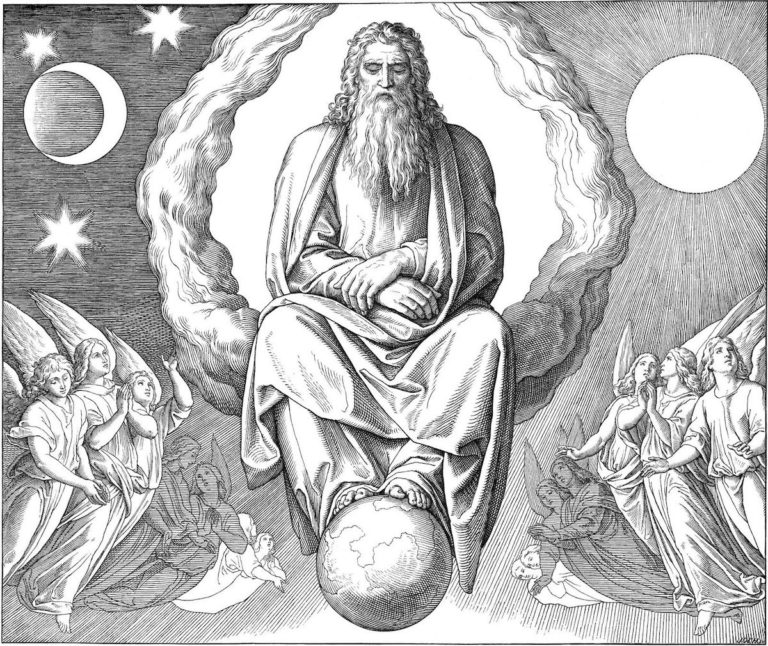The Numerical Arts
The Trivium and Quadrivium together make the seven liberal arts. We’ve looked briefly at the Trivium of Grammar, Logic, and Rhetoric. Let us take a glance at the Quadrivium.
The four arts of the Quadrivium are Arithmetic, Geometry, Music, and Astronomy. At first this may seem an odd group. We’re more used to seeing something like Algebra, Geometry, Trigonometry, and Calculus. But the Quadrivium does make sense. A man named Boethius (480-524 AD) put it in these terms: Arithmetic is number. Geometry is number in space. Music is number in time. Astronomy is number in space and time. “Well, I understand Arithmetic and Geometry,” someone might say. “But Music and Astronomy? Those are hobbies. How do those latter two prepare a child for a STEM career?” I should explain what math has become and what it used to be.
The Modern Mathematician
If we were to personify the current view of math, we might picture a tall, awkward, and straggly young man. He has slicked hair, a white button down shirt, a pocket protector. His skin is pasty white for want of sun. Under fluorescent lights in a room with no windows at a cold metal desk he calculates. Or rather, a computer calculates. He minds the computer and ponders its calculations. The bridge will fail at a load of eighty tons. The curvature of the plane fuselage is less conducive to flight and more conducive to fiery death. Change the frequency of the radio receiver, unless you want to hear the neighbor’s baby crying over the monitor. The mathematician works with the numbers and finds the solutions. He goes home with some sense of satisfaction in his work – sometimes – but will be very happy if he doesn’t have to think about numbers again until he clocks in the next day. It’s also worth noting that this mathematician does not believe in God. He holds that scientists, using numbers in some fabulous way, have disproven the existence of anything more almighty than the mathematician.
Now this man is a useful man. We want him, or at least we want what he does. But this little caricature identifies four problems with the current state of math. First, in large part math has been removed from the human mind and relegated to computers. Second, math has become limited to the realm of work. Third, math has been brought inside and locked in a sterile room, with the result that we think of numbers as something manufactured by man. And fourth, math has been set in false opposition to a Creator.
Arithmetic
Allow me to introduce the four arts of the Quadrivium and paint a different picture of the mathematician. First comes Arithmetic. Arithmetic is the foundation of the Quadrivium, just as Grammar is the foundation of the Trivium. In Arithmetic the student learns to equate numbers with symbols, learns how to count, learns how to add, subtract, multiply, divide. There is much rote memorization: addition tables, multiplication tables, order of operations. It doesn’t take long and Arithmetic can be put to good use. One can count back change, balance a checkbook, calculate cost per ounce and determine which bottle of ketchup gives the better bargain. This is Arithmetic at work.
But Arithmetic also likes to play. “How high can you count?” one of my daughters asked me. “Why, I can count so high,” I replied, “that I could spend the whole rest of my life counting!” Now how did I know that? From experience? No, but because counting is orderly and predictable and follows a set pattern. One could learn to count to a centillion in a fraction of the time it would actually take to do so. And because numbers follow patterns they can be extraordinarily fun.
Consider, for example, the Fibonacci sequence. Can you identify the pattern to these numbers: 1, 1, 2, 3, 5, 8, 13, 21, 34, 55, 89, 144? Each number is the sum of the two previous numbers in the sequence. How many numbers must there be in the sequence in order to pass one million? How can one calculate that without writing out the whole sequence? Do prime numbers come up in the sequence with any predictable regularity? Do odd numbers or even numbers occur more frequently? Why? You see that Arithmetic captivates the mind in a way that can hardly be called work.
Geometry
On to Geometry! As noted, Geometry takes the numbers from Arithmetic and puts them in space: plotting points in two dimensions on a graph, calculating the surface area or volume of a three-dimensional object, figuring the acreage of a field. Geometry proves itself useful, as did its younger sibling Arithmetic. Say you’re building a garden, 4’ x 8’ x 1’. How many 8’ lengths of 2×6 lumber do you need to construct the walls? You must square the sides as you put them together. How can you use the Pythagorean Theorem (a2 + b2 = c2) to ensure that the corners form right angles? How many cubic feet of soil do you need in order to fill your garden? Or how many gallons of paint do you need to cover the walls of your living room? Or how many gallons of water will it take to fill your swimming pool? Beyond these household applications, Geometry also gives us the architect, the engineer, the packaging specialist, and many other useful jobs.
But why should Geometry limit itself to mere utility when it can also give enjoyment and wonder? Geometry points out the fractal patterns of snowflakes, the order of spots on a leopard’s coat, the scales on fish, the pleasing repetition of the veins and edges of leaves. And try this: Pick up a pineapple. Look at the pattern of the patches on it. Start at the top of the pineapple and trace a curve of patches down and to the right until you get to the bottom. You could go all the way around the pineapple like this and count the number of curves that sweep down and to the right until you arrive back at where you started. And you know what? More often than not the number of curves will be a number from the Fibonacci sequence! You might do it again, tracing the curves down and to the left all the way around the pineapple. The number of those curves is also likely to be a number from the Fibonacci sequence.
You can do the same thing with pinecones, or artichokes. Suddenly the student of Geometry realizes that the Fibonacci sequence isn’t a pattern invented by man as a mathematical curiosity – it is built into the world! Man might be smart enough to notice it, but someone more intelligent made it. Far from being a cold science invented by man in a laboratory, Geometry is an art observed in and learned from the harmonious order of nature.
Music
We continue with Music. Now if an education is merely about learning skills that make money, then many would exclude Music. Very few people make money from it, and those who make the most money from it don’t even understand it. But what if, in addition to the rather simple goal of preparing people for STEM careers, the Quadrivium has a loftier goal? What if the purpose of the Quadrivium is to show the order of the world, to delight mankind with numbers and inspire him to wonder? What if, rather than manufacturing hunched mathematicians and placing them at desks in dim rooms, the Quadrivium purposes to bring its disciples outside, orient their faces toward the heavens, and place on their lips doxologies to the Most High? If that should be the case, then Music and Astronomy are not useless appendages or electives, take them or leave them. Rather, Music and Astronomy are the higher arts that take aim not at money, but at teaching human creatures to love their created-ness.
Music hardly ever goes to work, and when she does she hardly considers it work. She loves to play, and we retain this in our language of Music. We don’t “work” instruments, like scientists in a lab. We play instruments, and in our playing we testify that there is much more to life than money and a job. There’s beauty and delight. But don’t get the wrong idea about Music. She doesn’t play in a chaotic way, like a careless child crashing around the den. She plays in an orderly manner. It’s more fun that way.
Consider a piano. From C to C there are 13 keys, 8 white keys and 5 black keys. The black keys come in sets of 2 or 3, and between the black keys are either 1 or 2 white keys. If you start on C and count up 8 keys (with C as the first key), that’s called a 5th. If you start on C and count 5 keys, that’s a 3rd. If you count 13 keys that’s an octave, from the Latin word octo, 8. Have you noticed the pattern yet? The layout of a piano keyboard can be explained by ratios of numbers from the Fibonacci sequence! These ratios also explain the Circle of Fifths: if you multiply a frequency by 3/2 you get the respective 5th. While much of the Quadrivium shows the beautiful order of the world to the eyes, Music shows that beautiful order to the ears.
Astronomy
Now we come to the highest art of the Quadrivium: Astronomy. Astronomy pulls us from our man-made dwellings and brings us outside into a dwelling made by no man. Astronomy puts a gentle and strong hand under our chins and lifts up our heads. Astronomy turns us from marveling at the work of our hands to marveling at the works of another.
In a way Astronomy makes us uncomfortable. It is supposed to. We tend to think we’re really something. We’re given to puffing ourselves up, whether by worshiping what we’ve made or letting others inflate us with vainglory. Astronomy shows where you really stand in the cosmos. There is a God who perfectly orchestrates the movements of Jupiter and Saturn. What can you do that compares with that?
The Lord questioned Job, “Can you bind the chains of the Pleiades or loose the cords of Orion? Can you lead forth the Mazzaroth in their season, or can you guide the Bear with its children? Do you know the ordinances of the heavens? Can you establish their rule on earth?” (Job 38:31-33). Astronomy asks you the same questions. And we must answer with Job, “Behold, I am of small account” (Job 40:4).
The greatest astronomers have been Christians, perhaps because they’re not afraid to face the grandeur of God or their own smallness. They know from the Scriptures that while we are of no account by ourselves, we have been made in the image of God and the Son of God has shown us such favor that he died for us. The Christian, therefore, does not have to hide from Almighty God, but is free to marvel at the work of his hands.
This marveling is awfully fun, too. The astronomer Johannes Kepler (1571-1630 AD) is a good example. In his book Harmonies of the World he shows how geometric shapes inscribed in one another come close to the spatial arrangement of planetary orbits. He observes that one can represent the paths of the heavenly bodies with numerical ratios (the fact that the ratio 3/2 factors heavily in this really shouldn’t surprise us by this point).
Kepler also takes the ratios of the planets and converts them to musical ratios. He then uses musical notation to write out the harmonies that the planets “sing”: Saturn and Jupiter sing bass, Mars sings tenor, Earth and Venus sing alto, Mercury sings soprano. He portrays the heavens as a choir singing four-part harmony in praise of their Creator.
In doing this Kepler is not projecting man’s music into the heavens. It’s rather the opposite. Kepler writes:
Accordingly, you won’t wonder any more that a very excellent order of sounds or pitches in a musical system or scale has been set up by men, since you see that they are doing nothing else in this business except to play the apes [i.e. imitators] of God the Creator and to act out, as it were, a certain drama of the ordination of the celestial movements (Harmonies of the World, Chapter 5).
The Classical Mathematician
Having covered the four arts of the Quadrivium, let us conclude with this question: what kind of mathematician does the Quadrivium make? First of all, the Quadrivium makes all of its students mathematicians, and for no other reason than the pure joy of numbers. If some go on to make money with these numbers, fine, but the Quadrivium is not concerned about forming money-makers.
The Quadrivium forms a person who is so conversant in the language of numbers that he can figure even complex equations without the aid of a calculator. The Quadrivium forms a person who finds so much wonder and fun in the numbers and ratios and harmonies of the world that he can’t think of it as work. The Quadrivium forms a person who understands that numbers are received from the created world, and are not manufactured by men in their closets. Most importantly the Quadrivium forms a person who understands the whole universe in mathematical terms, and rather than misusing his knowledge to explain God away, he breaks forth in high doxology.
The mathematician formed by the Quadrivium may still be tall, awkward, and straggly. He may still have slicked hair, a white button down shirt, and a pocket protector. He certainly still uses his knowledge of numbers in service to others. But his sleeves are rolled up, his skin knows the light of the sun, his face inclines toward the heavens, and he praises God the Father Almighty, Maker of heaven and earth:
Great is our Lord and great His virtue and of His wisdom there is no number: praise Him, ye heavens, praise Him, ye sun, moon, and planets, use every sense for perceiving, every tongue for declaring your Creator. Praise Him, ye celestial harmonies, praise Him, ye judges of the harmonies uncovered…: and thou my soul, praise the Lord thy Creator, as long as I shall be: for out of Him and through Him and in Him are all things, both the sensible and the intelligible; for both those whereof we are utterly ignorant and those which we know are the least part of them; because there is still more beyond. To Him be praise, honour, and glory, world without end. Amen. (Harmonies of the World, Chapter 10).
Harmonies of the World by Johannes Kepler, 1619
Translated by Charles Glenn Wallis, 1939
Woodcut: The Seventh Day of Creation by Julius Schnorr von Carolsfeld, 1794-1872
Image provided courtesy of the Pitts Theology Library, Candler School of Theology, Emory University.


